This Tang Yuan post may contain affiliate links. Please read my disclaimer.
Tang Yuan 汤圆 is a Chinese sweet treat typically served in ginger sweet syrup during major Chinese festivals. The eating of tang yuan symbolises harmony, togetherness and reunion. In Chinese, the pronounciation 团团圆圆 (tuan tuan yuan yuan which literally means grouping or gathering and roundness) also signifies happy reunion with family and loved ones.
Tang yuan originates from southern China with over 2,000 years of history. It’s called yuan xiao 元宵 in northern China. They are very similar, both made of glutinous rice, shaped like a ball and stuffed with fillings. The size varies from that of a marble (usually without filling) to the size of a ping pong ball. Tang yuan can be filled with sweet or savoury fillings and are served in thin broths or soups, while yuan xiao is usually stuffed with sweet fillings and served in a thick soup.
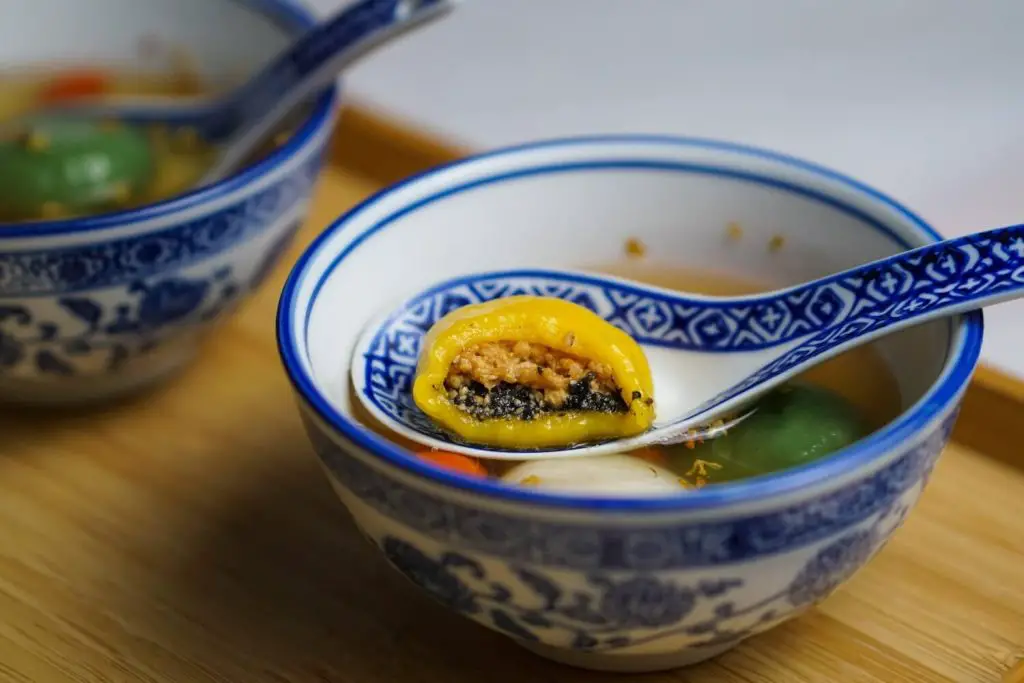
When is tang yuan eaten?
Tang yuan is typically eaten with family and loved ones during the Chinese Lantern Festival, Winter Solstice, Lunar New Year and other important festivals and family gatherings.
The Chinese Lantern Festival falls on the 15th day of the Lunar New Year, which is also the last day of the Lunar New Year 15-day celebration, and marks the first full moon after the Spring Festival and of the Lunar New Year. The Chinese named this day as 元宵节 (yuan xiao jie), which means the “first night of the full moon”. In Singapore, this day is commonly called the ‘chap goh mei’, meaning the night of the 15th day in Hokkien. And Singaporean Chinese will have their last round of family reunion dinner together on this night, serving tang yuan as desserts after dinner.
Tang yuan is also served during the Winter Solstice festival, a time for families to get together. Winter Solstice (冬至 dong zhi which literally means the arrival of winter) happens just before Christmas, when the night is the longest and day shortest in the northern hemisphere. Families not only come together to make and eat tang yuan, popular activities include worshipping the heaven and ancestors, making rice wine (during the ancient times), making and eating dumplings.
Because of its auspicious symbolisation, this dish is sometimes also served during weddings and dinners whenever the family or loved ones are reunited.
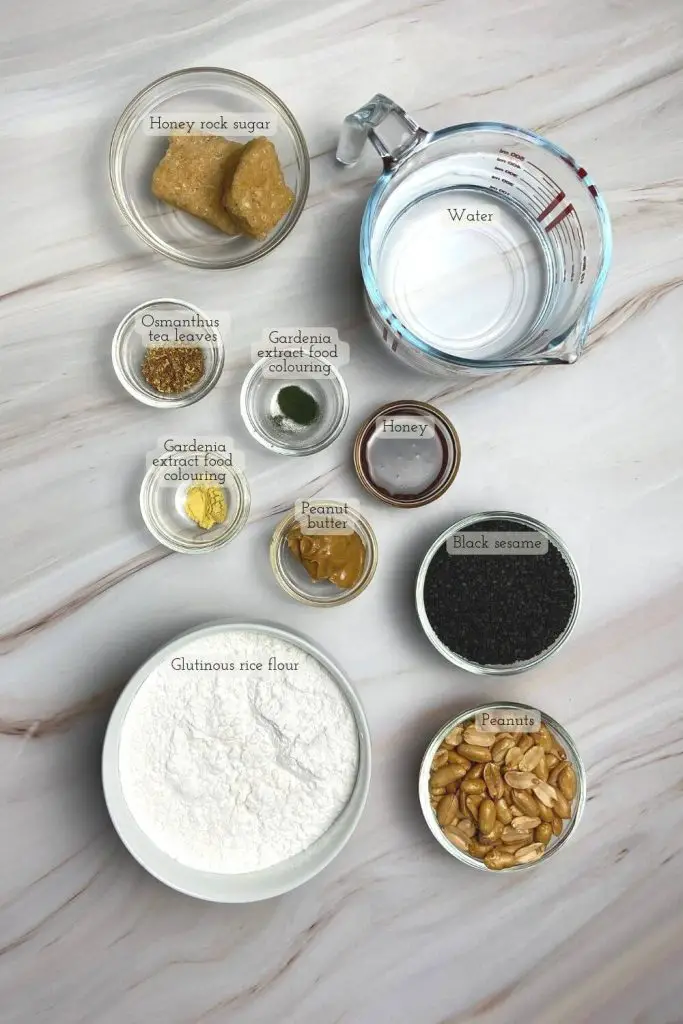
What is Tang Yuan made of?
The chewy external part is made of glutinous rice flour and water. Some people might add some rice flour to reduce the chewiness. When I was small, tang yuan comes in either pink or white colours. These days you can make it multi-coloured. In this recipe, I used gardenia extract food colouring to colour the dough, for the pink colour, I used red-coloured agar agar powder which turns out great.
The traditional filling for tang yuan is made from animal lard, sugar, sesame, and peanuts. In this recipe, I omitted the use of animal lard and replaced the sugar with sweeteners such as honey and peanut butter for the fillings. As you can see from the picture below, there are three fillings you can make with black sesame and peanut butter including one with a mix of both.
For the sweet soup, I am using osmanthus tea leaves, goji berries and honey rock sugar to make a light sweet broth.
The ingredients used in this recipe are all gluten-free.
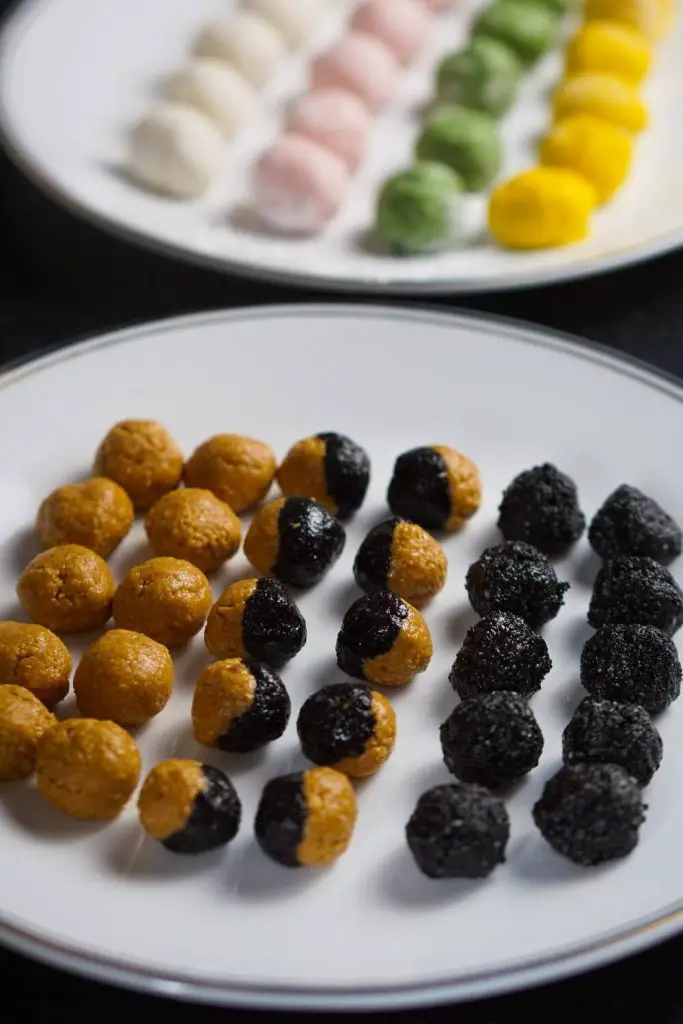
What are the different versions of Tang Yuan around the world?
- In Japan, the closest variety is called the Japanese Daifukumochi and is eaten during the Lunar New Year. It’s made of glutinous rice (mochi in Japanese) and stuffed with sweet filling such as the red bean sweet paste made from azuki beans. It’s very chewy and is eaten dry instead of served in a broth.
- In Thailand and Vietnam, you can easily buy rice flour balls in sweet coconut soup from street vendors, food courts and restaurants. It’s eaten during the Winter Solstice period by the locals of Chinese descent. In Thailand, it’s called bua loi while in Vietnam, it’s called bánh trôi nước or bánh chay.
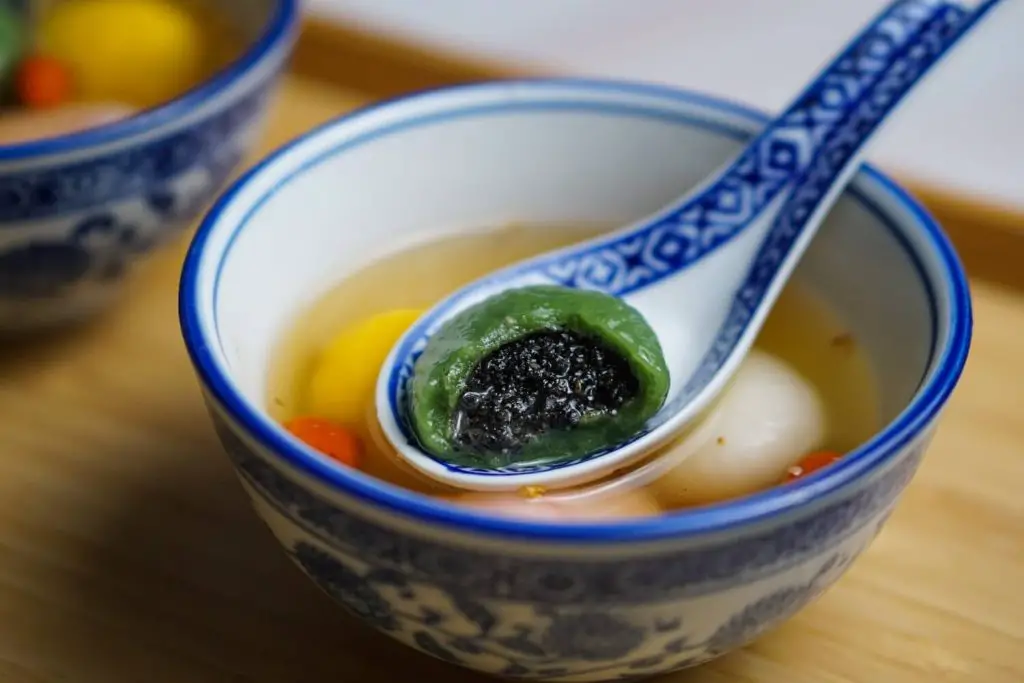
Tips on making Tang Yuan
- In this recipe, I boiled the glutinous rice balls in a pot of water, separately from the osmanthus goji tea. If you used the osmanthus goji tea to boil the rice balls, the tea will turn murky which does not look good and appetising. You can boil the rice balls in the sweet broth if you do not mind it to be murky.
- For the dough, I mixed glutinous rice flour with hot boiling water. The dough will be stretchable and chewy after cooked. If you prefer the dough to be less chewy, you can replace 20% of the flour with rice flour. It’s also important to add hot boiling water as it helps ‘cook’ the glutinous rice flour and makes it stretchable and not easy to break.
- For the peanut filling, only whole peanuts that’s toasted and peanut butter are used, without adding any sweetener. This is great if you do not like desserts that are too sweet and some might find it bland. You can opt to add some sugar or natural sweeteners into it, such as the monk fruit sweetener.
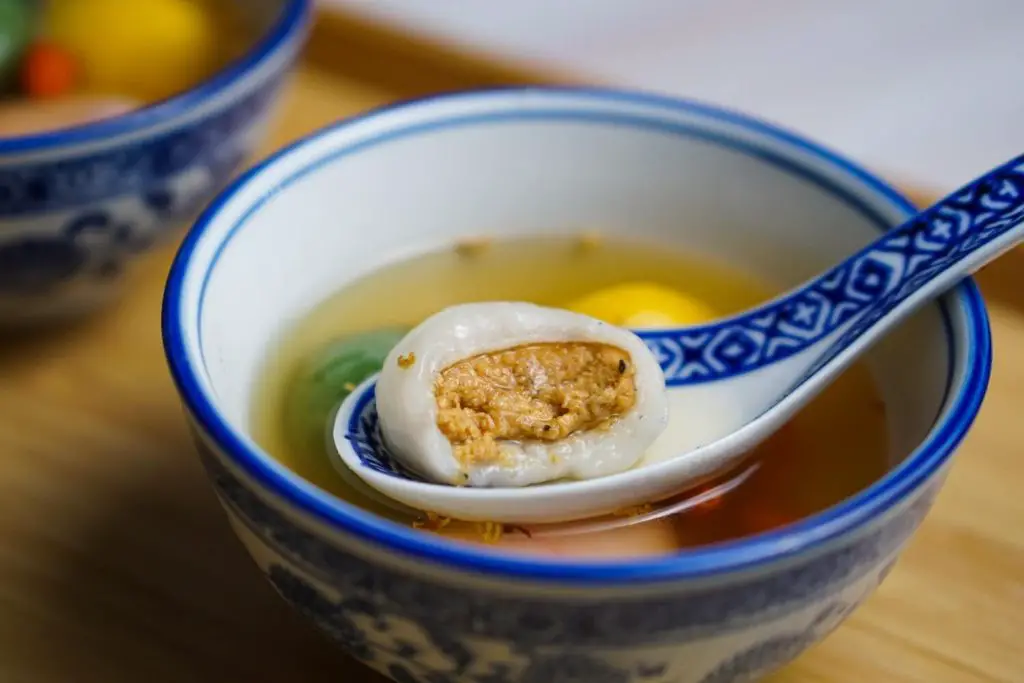
Check out other Chinese desserts
Watch how to make Chinese glutinous rice balls on YouTube
Pin now, cook later
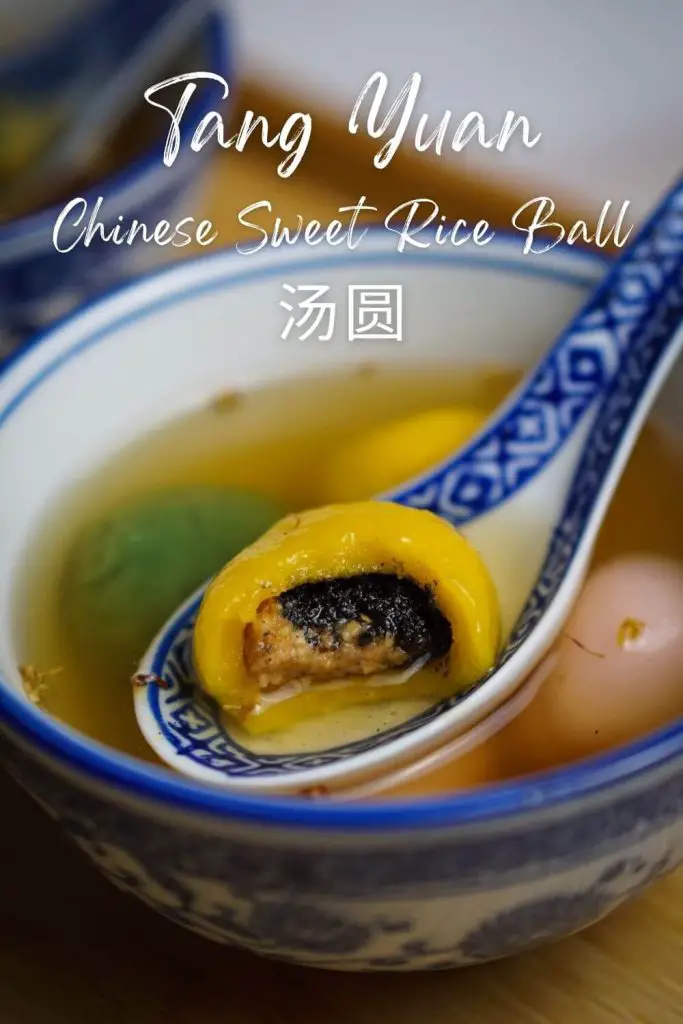
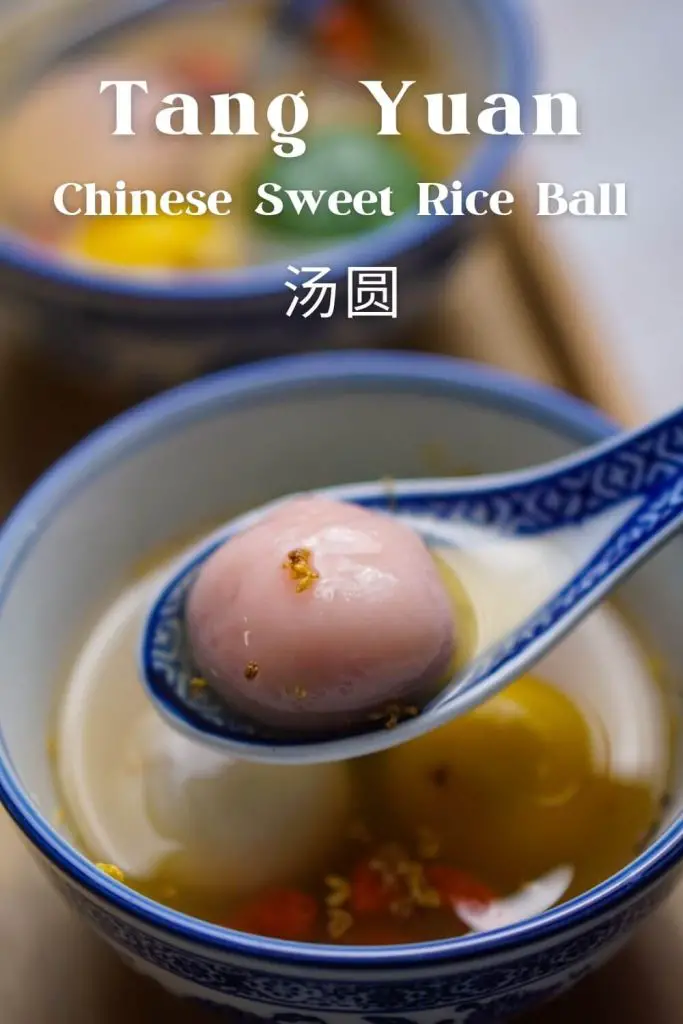
Tang Yuan, Chinese Glutinous Rice Balls with peanut and black sesame filling 汤圆
Ingredients
Black sesame filling
- 100 g black sesame
- 1.5 tbsp honey
Peanut filling
- 100 g whole peanut
- 1.5 tbsp peanut butter
- Monk fruit sweetener optional if peanut butter is mildly sweet
Osmanthus goji tea
- 0.5 tsp osmanthus tea leaves and more for garnishing
- 1 tbsp goji berries
- 50 g honey rock sugar or brown sugar
- 1.5 litre water
Rice ball dough
- 250 g glutinous rice flour
- 200 ml hot boiling water
- 0.25 tsp gardenia extract food colouring powder or agar agar powder various colours
- 3 tbsp cold water to add to boiling pot of tang yuan
Instructions
Make peanut filling and black sesame filling
- Toast peanuts over medium heat for 1-2 minutes in a non-stick pan until it turns aromatic. Remove peanuts and let cool. Then transfer into a food processor and grind into coarse bits. Add 1.5 tbsp peanut butter and blitz to mix well into paste texture.Cover and chill in the fridge until ready to use. Note: Take note not to overgrind the peanuts, if not it turns into peanut butter.100 g whole peanut, 1.5 tbsp peanut butter, Monk fruit sweetener
- Toast black sesame over medium heat for 1-2 minutes in a non-stick pan until it turns aromatic. Remove black sesame from pan and let it cool completely. Then transfer into a food processor and grind into fine paste texture. The black sesame will release some oil and become moist. Add 1.5 tbsp honey and blitz to mix well.Cover and chill in the fridge until ready to use.100 g black sesame, 1.5 tbsp honey
- Remove the peanut and black sesame fillings from the fridge and use a small spoon or melon baller to scoop out small portions. Roll the fillings into 6g balls.Create 3 fillings: 1) peanut, 2) black sesame, 3) half peanut half black sesame.Place all the filling balls on a plate and cover with cling wrap. Chill in fridge until ready to use.
Make osmanthus goji tea
- Boil water over high heat. Once boiled, add honey rock sugar, goji berries and osmanthus tea leaves. Simmer for 1 minutes, then remove from heat.0.5 tsp osmanthus tea leaves, 1 tbsp goji berries, 50 g honey rock sugar, 1.5 litre water
Make the tang yuan dough
- Make a well in the middle of the glutinous rice flour in a large mixing bowl.Add hot boiling water progressively, while using a spatula to mix the water and flour together, gradually a rough dough will be formed. Note: the dough might look disintegrated at this stage.250 g glutinous rice flour, 200 ml hot boiling water
- Once the mixture cools down, mix and knead the dough by hand, until the dough turns uniformed, smooth and stretchy.Note: add some water if the dough is too dry.
- This step is optional.Divide the dough into equal parts. Add food colouring to each dough portion and mix by hand into a uniformly coloured dough. Note: I used gardenia extract food colouring powder for yellow and green. For the pink, I used red agar agar powder which turns out a nice pink.0.25 tsp gardenia extract food colouring powder or agar agar powder
- Dust the dough with glutinous rice flour to prevent from sticking to each other. Cover and rest the dough for 30 minutes at room temperature.
- After resting, roll the dough into balls, each weighing about 12g.Cover with cling wrap to prevent from drying.
- Press the dough in the middle with your thumb to form a ‘bowl’. Place the filling in the middle of the ‘bowl’.
- Press the edge of the dough to close. Make sure it’s sealed properly to avoid leakage. Then roll into a smooth ball again. Dust each tang yuan with glutinous rice flour to prevent from sticking to each other. Cover the tang yuan with cling wrap to prevent from drying.
- Boil water in a pot on high heat. Once boiled, add the tang yuan gently into the pot of boiling water and reduce heat to medium. Stir regularly to prevent sticking to the pot.Once the tang yuan floats to the top, add 3 tbsp of cold water. Boil for another 2 minutes.3 tbsp cold water
- Transfer the tang yuan into an ice bath and leave it for 1 minute.
- Serve the tang yuan in the osmanthus goji tea (warm or chilled) and sprinkle with more osmanthus tea leaves for garnish.0.5 tsp osmanthus tea leaves
Video
Notes
- In this recipe, I boiled the glutinous rice balls in a pot of water, separately from the osmanthus goji tea. If you used the osmanthus goji tea to boil the rice balls, the tea will turn murky which does not look good and appetising. You can use the tea to boil the rice balls if you do not mind the looks.
- For the dough, I used glutinous rice flour and hot boiling water. The dough will be stretchable and chewy after cooked. If you prefer the dough to be less chewy, you can replace 20% of the flour with rice flour. It’s also important to add hot boiling water as it helps ‘cook’ the glutinous rice flour and makes it stretchable and not easy to break.
- For the peanut filling, I used only whole peanuts that’s toasted and peanut butter, without adding any sweetener. This is great if you do not like desserts that are too sweet and some might find it bland. You can opt to add some sugar or natural sweeteners into it, such as the monk fruit sweetener.
Nutrition
Sharing this recipe with Fiesta Friday.

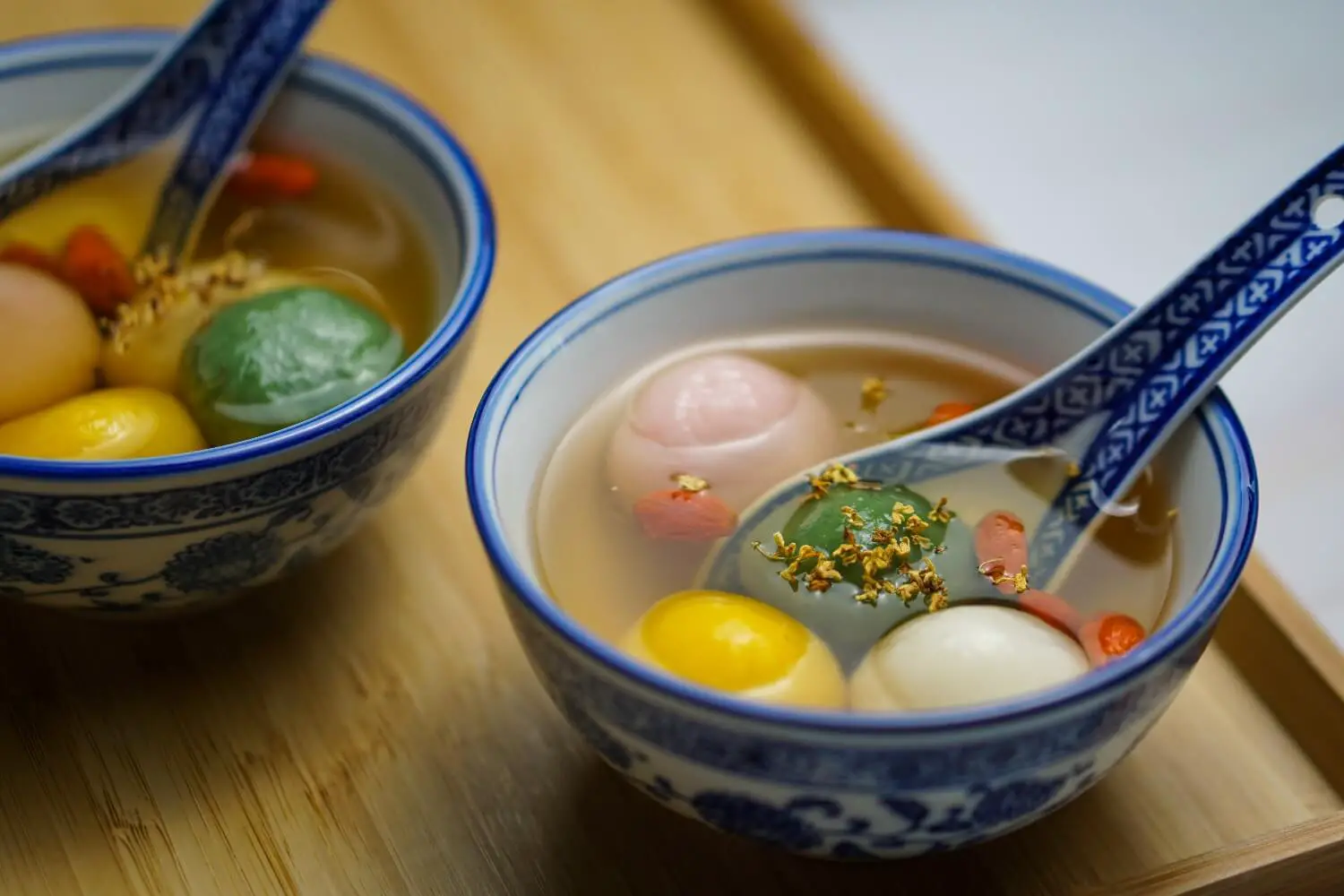
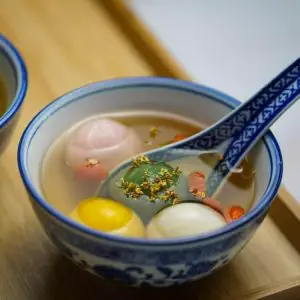


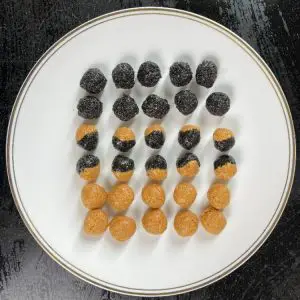
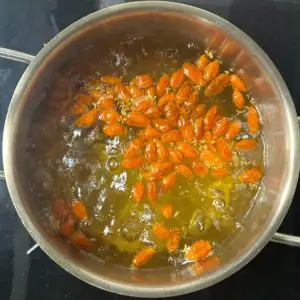
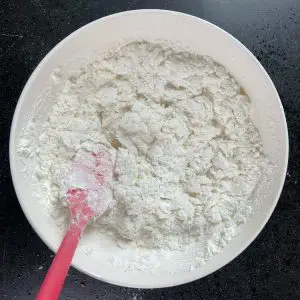
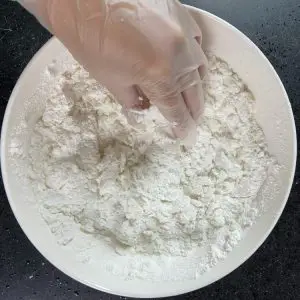

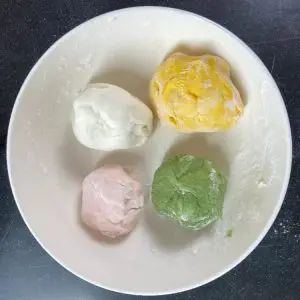
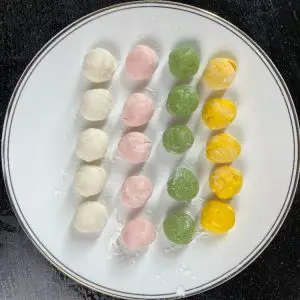
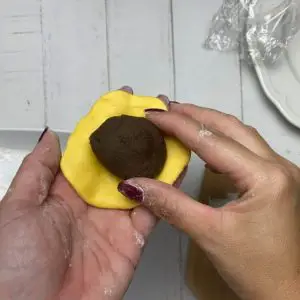
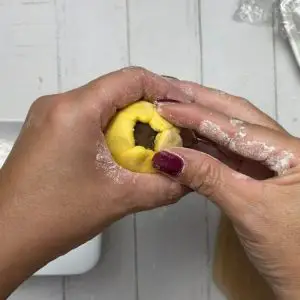
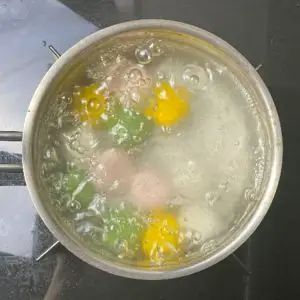
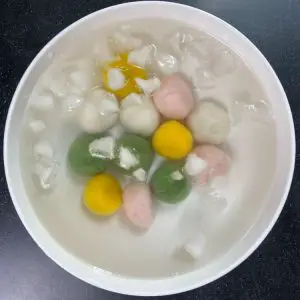
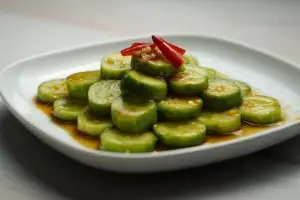 Din Tai Fung Cucumber Salad 鼎泰丰辣味黄瓜
Din Tai Fung Cucumber Salad 鼎泰丰辣味黄瓜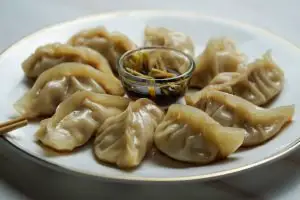 Chinese Potsticker Dumplings 锅贴
Chinese Potsticker Dumplings 锅贴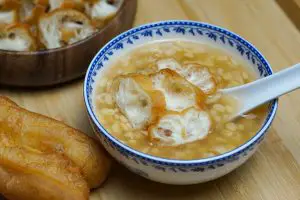
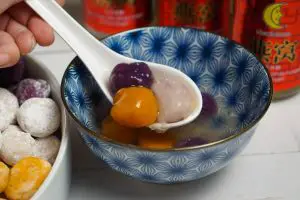
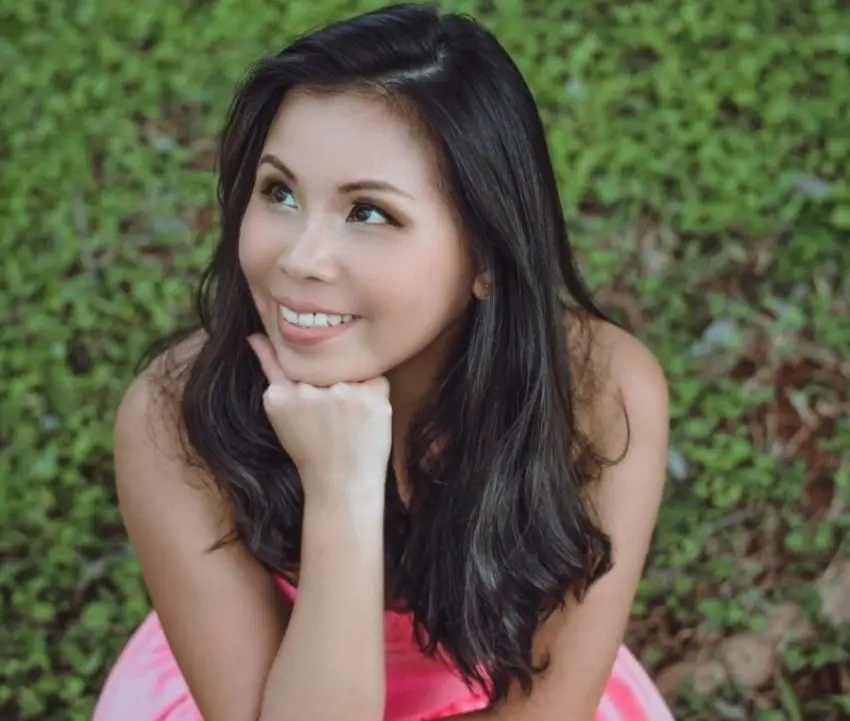

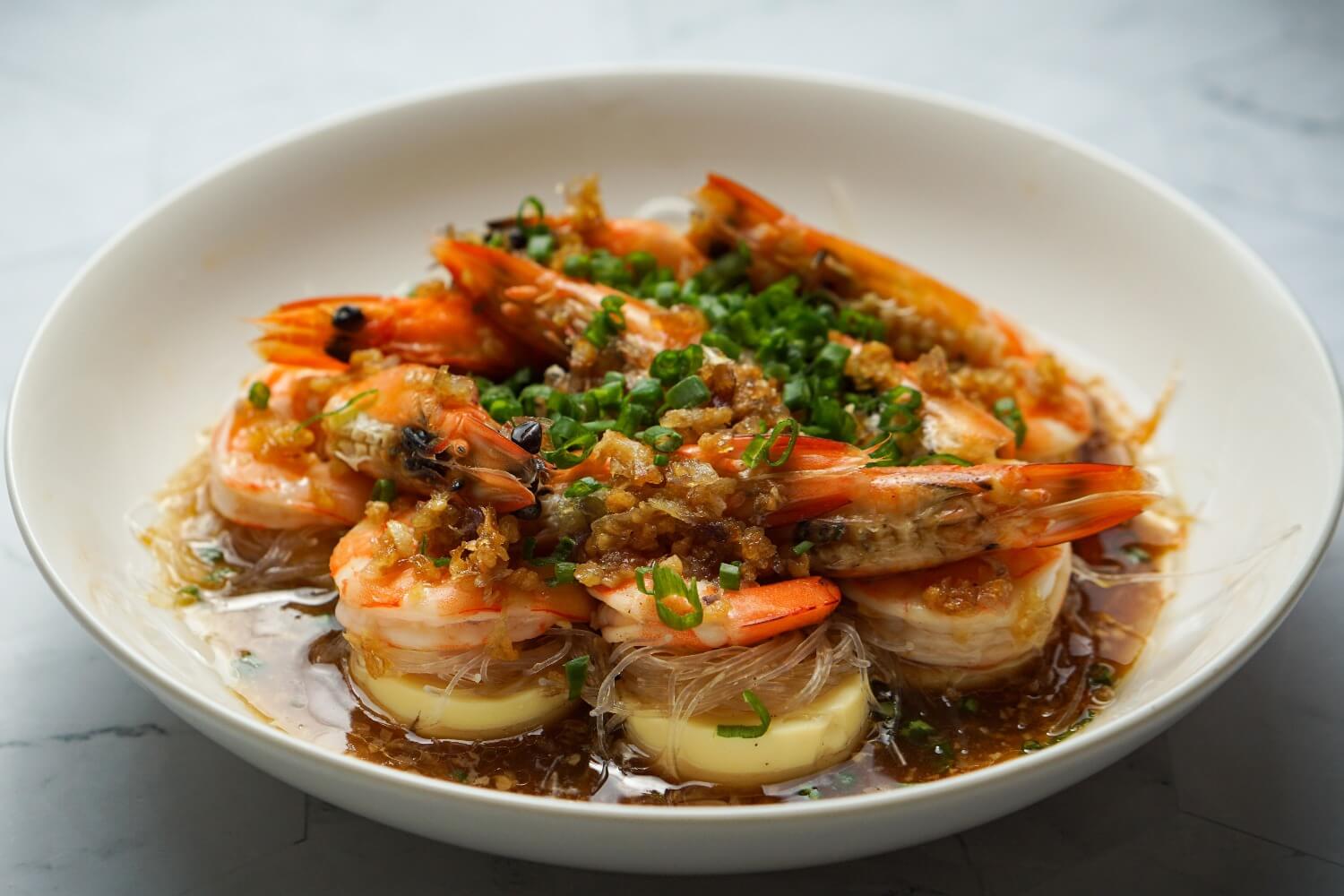
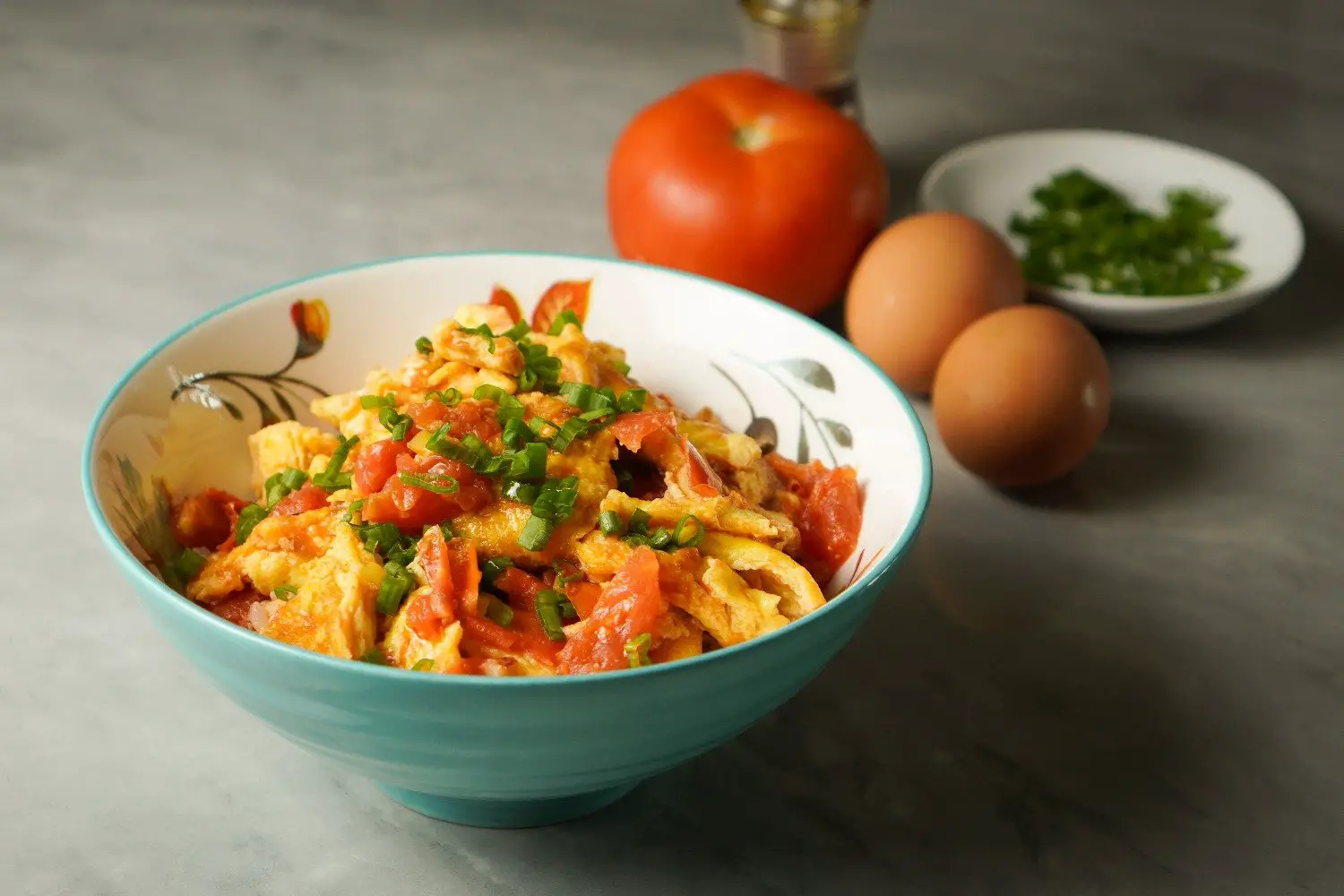


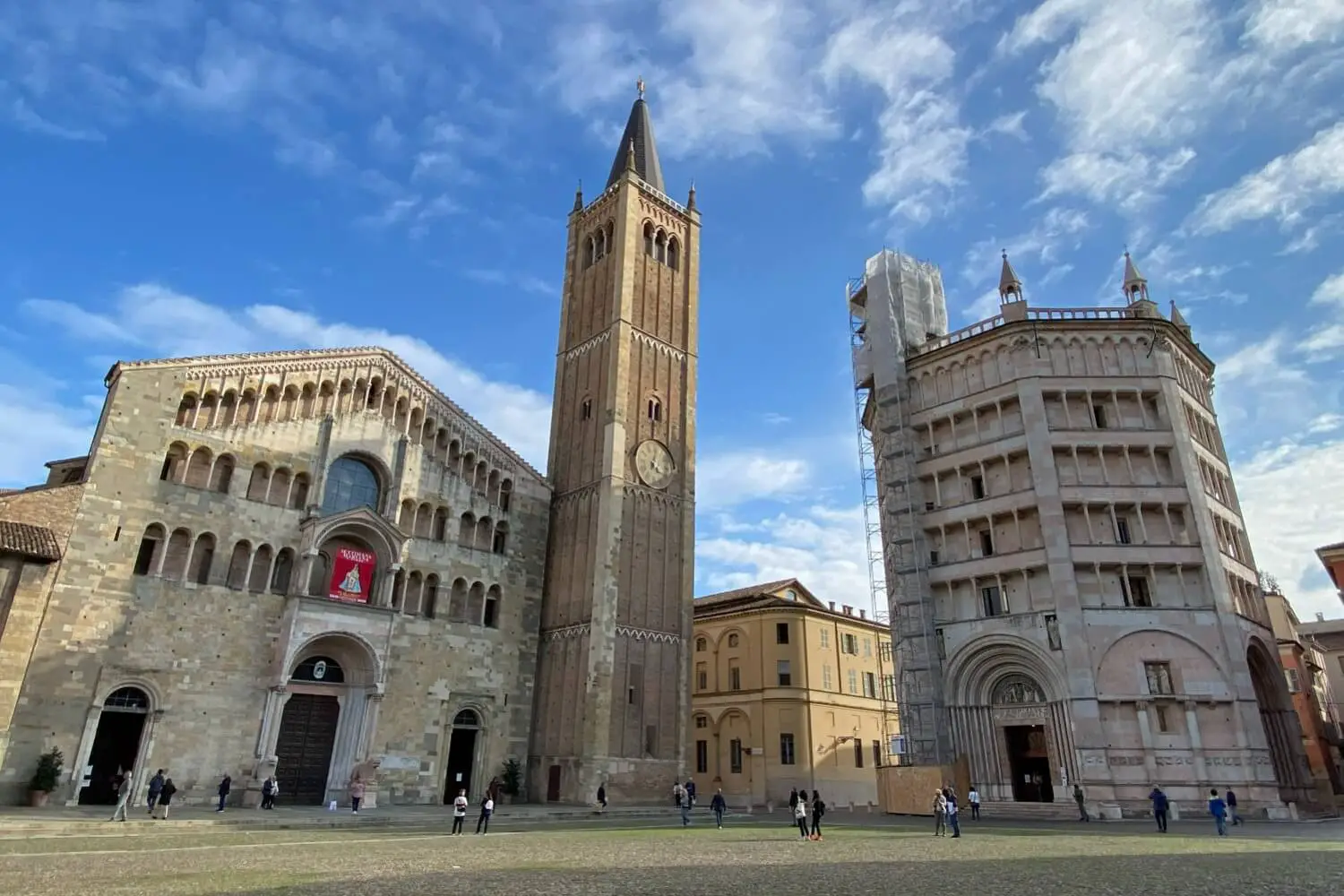

10 March 2023 at 12:36 pmWonderful post, Pauline! I’m learning so much about Tang Yuan and it’s making me want to make them. Thanks for cohosting! XO
15 March 2023 at 11:05 pmThanks Angie for having me. Hope you get to try out Tang Yuan, it’s a delicious comforting dessert I love having it with my family.